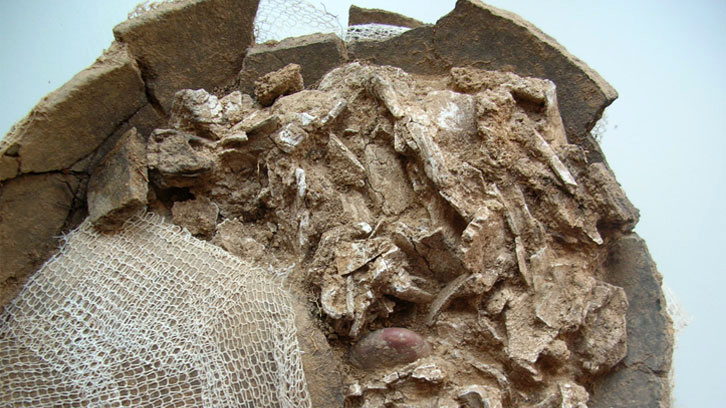Dating cultural change from inhumation to cremation of the dead in the Bronze Age

Author: Eulàlia Subirà (UAB).
Since the first works of Pere Bosch Gimpera, father of Catalan archaeology, at the beginning of the 20th century, one of the key topics of the protohistoric debate focusing on the northeast of the Iberian Peninsula has been the study of the so-called "Urnfield culture", characterized by the spread on a European scale of the tradition of burning the dead and placing skeletal remains, pyre charcoal and ashes in ceramic urns. This funerary rite is attested in the last phases of the Bronze Age in a large territory, from the Carpathians and the Danube valley to the northeast of the Iberian Peninsula. This process led to a phenomenon of cultural change: some members of local communities, characterized by the practice of burying their dead in pits, frequently covered by a mound of stones and earth, began to adopt the new funerary practice.
The study, published in World Archaeology, aims to shed light on the process of transition from inhumation to cremation through an innovative approach based on the statistical analysis of funerary contexts between 1800 and 800 BC in the territories corresponding to the current Catalan region and Switzerland. In particular, the radiocarbon-dated archaeological contexts have been used as a starting point for the analysis. Nowadays, radiocarbon (14C) dating has become the most widespread technique to date organic materials in order to clarify the age of archaeological remains and as a consequence the human and natural processes that have generated the archaeological deposit.
Figure 1: On the left, Early Bronze Age inhumation grave from the cemetery of Spiez-Einigen (Bern, Switzerland). On the right, simple cremation grave, cemetery of Pi de la Lliura (Girona, Catalonia).
The analyzed dataset is composed of 40 14C dates originating from 13 funerary contexts located in Switzerland (19 samples from cremation graves, 20 from inhumation graves, and one from a grave with both rites attested) and 47 14C dates from 25 archaeological sites in Catalonia (17 dates are associated with 7 cremation graves, while 30 samples originate from inhumation graves).
|
|
|
| Figura 2: Radiocarbon date from a sample of charcoal originating from a burial mound at the cemetery of Pedrós (Lleida, Catalonia). | |
The work was carried out at the Laboratory of Quantitative Archaeology (LAQU) of the Department of Prehistory, UAB, thanks to funding from the Departament d’Universitats, Recerca i Societat de la Informació of the Catalan Government and the Ministry of Science and Innovation, with the project HAR2012-31036.
References
Capuzzo, Giacomo; Barceló, Juan Antonio. Cultural changes in the second millennium BC: a Bayesian examination of radiocarbon evidence from Switzerland and Catalonia. World Archaeology. 2015, vol. 47, num. 4, p. 622-641. doi: 10.1080/00438243.2015.1053571.


